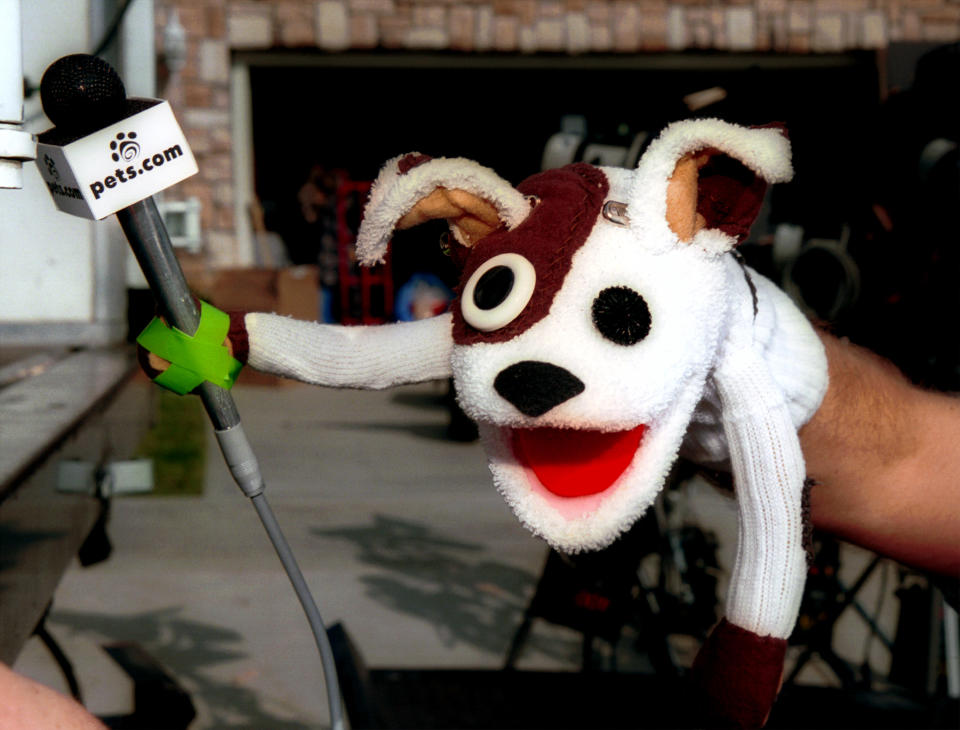The booming prices of artificial intelligence stocks have some obvious parallels with the dot-com bubble that inflated the stock market to outrageous highs in 1999 and 2000. Parallels that make some investors nervous today.
According to a recent survey from Bank of America, 40% of fund managers think AI stocks are in a bubble (45% say no, and 15% don’t know).
But as someone for whom the dot-com bubble was current events rather than history, I can tell you that today’s market isn’t remotely like the dot-com bubble market was.
How can I say such a thing?
It’s because the investing world has changed fundamentally from what it was in the dot-com bubble days.
Back then, besotted people (I wouldn’t call them investors) paid whatever the market was asking for ridiculously priced stocks like Pets.com, Boo.com, and Webvan, which ultimately croaked and left shareholders with nothing.
Why were people loading up with individual stocks? The fear of missing out on the internet wave certainly kept people piling money onto the table as they looked to quintuple their money. But the main reason was that back in 2000, people simply didn’t invest like they do now, as broad-based index funds were pretty much nonexistent compared to today.
So people who had bought into the dot-com hype — and there were plenty of them — mostly bought individual stocks.
These days, people talk — mistakenly, in my opinion — about the S&P 500 (^GSPC) being in a bubble, given the concentration of a handful of stocks powering the index. Back then, the Nasdaq market was the hot thing. And boy, did that bubble burst.

One of the most bubbly events took place on Jan. 10, 2000. That’s when Gerald Levin had Time Warner, the media and entertainment company that he was running, do the dumbest deal in history: selling itself to America Online in return for AOL stock, which was a dot-com megabubble.
(You may have read about this deal lately because Levin died last week and many obituaries mentioned his AOL debacle.)
Two months after the Time Warner-AOL deal was announced — on Mar. 10, 2000 — the Nasdaq, which had more than doubled from a year earlier, hit its closing peak of 5,048.62.
Then the slide began. And kept on going. And going. And going.
Ultimately, the Nasdaq bottomed out at 1,114.11 on Oct. 9, 2002. That was 78% below its high. It didn’t score another new high until April 23, 2015 — more than 15 years after the previous peak.
Even one of the high-quality companies that survived the bubble — Cisco Systems — hasn’t been a great investment. It was recently trading for about 30% less than it fetched on Peak Bubble Day.
Barring a totally unforeseen catastrophe, can you see the S&P losing 78% of its value in a little over two and a half years from now? I sure can’t see that happening. Especially given the trillions of dollars currently sloshing around in S&P index funds, with more money flowing in on a regular basis from employers and employees participating in benefit plans and from institutional investors such as pension funds for whom the S&P is a benchmark.
But, you say, what about the Magnificent Seven tech companies whose stocks more than doubled last year and drove the S&P to new high after new high?
The S&P’s total return — price increases plus reinvested dividends — for the year was 26.3%. Doesn’t this mean that we’re in a bubble?
I don’t think so. Among the reasons is that even though the Seven were incredibly hot, the other S&P companies — let’s call them the Non-Magnificent 493 — had a total return of 9.9%, according to Howard Silverblatt, senior index analyst at S&P Dow Jones Indices. That’s about the average return the US market has shown over the long term.

Amazingly, this year’s market, despite a recent decline, is on track to outperform last year’s market. The S&P had returned 7.28% through Friday’s close, according to Silverblatt. Extrapolate that 2.5-month return to a full year and you get 34.9%.
And now, some of last year’s Magnificent Seven are having a less-than-magnificent 2024. Tesla (TSLA) was down 34.2% as of Friday’s close — the worst performer in the S&P, according to Silverblatt.
Nvidia (NVDA) accounted for 32% of the S&P’s gain this year, he says, with Microsoft (MSFT), Meta (META), and Amazon (AMZN) accounting for another 28%. Apple (AAPL), however, is down for the year, and Alphabet (GOOG, GOOGL) has only a marginal gain. (So perhaps we should rename the Magnificent Seven the Fab Four?)
The point here is that it doesn’t seem very bubbly when three of the Magnificent Seven aren’t doing well and yet the S&P keeps chugging along.
Look. I’m not telling you that the market is any sort of bargain these days — it’s not cheap by any standard. And I’m not telling you that it’s not going to decline, possibly sharply, over the mid- to long-term.
But what I am telling you is that there’s a big difference between a high-priced market like today’s and an insanely priced market like the Nasdaq was in the dot-com bubble days.
There may be some difficult times ahead for investors. But a decline of almost 80% over the next two and a half years? As we say in the part of the world in which I live: fuhgeddaboudit.
Allan Sloan is an award-winning journalist and contributor to Yahoo Finance.
Click here for in-depth analysis of the latest stock market news and events moving stock prices.
Read the latest financial and business news from Yahoo Finance
Source: finance.yahoo.com
